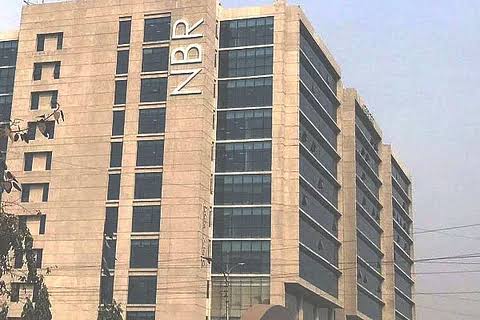Staff Correspondent
Published:2025-07-10 21:04:12 BdST
Upholding fiscal disciplineNBR reform aims at boosting revenue collection: Finance Ministry
Bangladesh continues to grapple with one of the lowest revenue-to-GDP ratios in the world, hovering around 8 percent for decades, prompting the government to adopt a series of reforms aimed at strengthening revenue mobilisation and maintaining fiscal discipline.
In response, the government has taken initiative to separate tax policy from administration to design fair, growth-friendly tax policies with greater efficiency and accountability.
In line with this move, according to the Medium Term Macroeconomic Policy Statement by the Finance Division of the Finance Ministry, required legislation is being enacted.
It said that the NBR has also adopted the Medium- and Long-Term Revenue Strategy (MLTRS) to boost revenue Mobilisation aiming to raise the revenue-to-GDP ratio to 10.5 percent by FY2035, a target that reflects a relatively modest level of ambition, especially in the context of country’s growing development needs.
Within this context, the revenue outlook for the fiscal sector is projected to follow a steady growth trajectory over the medium-term.
Total revenue is expected to increase gradually from 8.18 percent of GDP in FY24 to 9.09 percent of GDP by FY28.
In FY25, the total revenue target has been revised downward from 9.66 percent to 9.17 percent of GDP, which comes from domestic economic challenges, reduced import demand, tax exemptions on essential food items, and contractionary fiscal measures.
Non-Tax Revenue (NTR), meanwhile, remains relatively low, mainly due to limited administrative fees, service charges, and returns from public assets and is projected to reach only 0.67 percent of GDP by FY28.
The national budget for FY2025–26 has set the revenue collection target at Tk5.64lakh crore, which is equivalent to 9% of the country's Gross Domestic Product (GDP).
Of the total estimated revenue income of Tk5.64 lakh crore, an amount of Tk4.99 lakh crore is expected to be collected through the NBR, while the remaining Tk65,000 crore is projected to come from other sources.
Of the toral amount of NBR side, the Taxes on Income,Profits and Capital Gains will be Tk1,82,001 crore, Value Added Tax will be Tk1,88,518 crore, Supplementary Tax will be Tk68,244 crore, Import Duty Tk51,438, Export Duty Tk78 crore, Excise Duty Tk6,091 crore and Tk2,630 will be come from Other Taxes segment.
Of the total Tk19,000 crore from non-NBR segment, some Tk11,886 crore will come from stamp (non-judicial), Tk2,723 crore from land tax, Tk2,000 from vehicle tax, Tk1,541 crore from surcharge and Tk850 crore from narcotics and liquor duty.
Of the total Tk46,000 crore non-tax revenue, Dividends and Profits will contribute Tk10,791 crore, Interest Tk4,890 crore, Administrative Fees Tk5,070 crore, Fines, Penalties and Forfeiture Tk486 crore, Service Fees Tk8,634 crore, Rents and Leases Tk711 crore, Tolls Tk1,709 crore, Non-Commercial Sales Tk3,077 crore, Other Receipts (other than tax) Tk10,527 crore and Capital Receipts Tk105 crore.
Bangladesh’s fiscal profile continues to reflect one of the lowest government expenditure-to-GDP ratios globally, in line with its historically low tax-to-GDP ratio, according to official documents.
Over the past decade, total public expenditure has hovered between 12 percent and 13 percent of GDP.
In the FY25 original budget, total expenditure was projected at 14.24 percent of GDP; however, this has been revised downward to 13.18 percent due to persistent macroeconomic challenges, including revenue underperformance, elevated inflationary pressures, and external sector vulnerabilities.
A key factor behind this revision is the reduction in Annual Development Programme (ADP) spending from 4.73 percent to 3.83 percent of GDP, reflecting a deliberate policy shift toward deferring non-essential capital projects to maintain fiscal discipline and support inflation management.
Meanwhile, current expenditure remains broadly stable, which underscores the government’s commitment to sustaining essential services and social protection.
Over the medium-term, expenditure is expected to follow a measured upward path in line with enhanced revenue mobilisation and fiscal space, with total outlays projected to remain around 12.76 percent of GDP by FY28.
ADP expenditure, however, is expected to remain modest, stabilising at 3.83 percent of GDP by FY28.
Currently, the outstanding total public debt (including GPF) remains below 40 percent of GDP, and the fiscal deficit has consistently been maintained below 5 percent of GDP.
Nonetheless, the share of interest payments has been increasing in recent years, driven by a higher volume of external debt and rising interest rates on both domestic and external borrowing.
For FY25, the overall fiscal deficit has been revised down to 4.0 percent of GDP from 4.57 percent in the original budget.
This adjustment reflects expenditure cuts, particularly the postponement of less priority ADP projects. Looking ahead, the overall deficit is projected to decline further to 3.73 percent of GDP by FY28, which is lower than the actual deficits recorded in recent years.
This projection aligns with the government’s medium- term stance of maintaining a contractionary fiscal policy.
Moreover, net foreign financing is estimated at 1.93 percent of GDP in the revised FY25 budget, it is expected to decline to 1.24 percent by FY28, reflecting the government's effort to reduce external borrowing and discourage reliance on non-concessional loans.
Unauthorized use or reproduction of The Finance Today content for commercial purposes is strictly prohibited.


